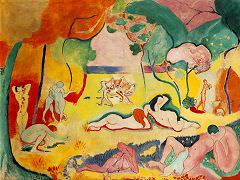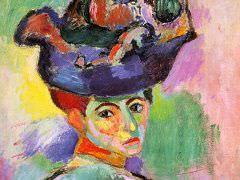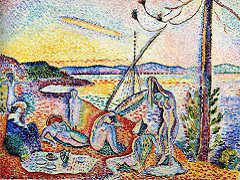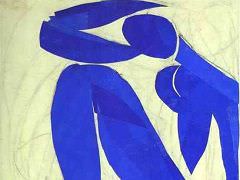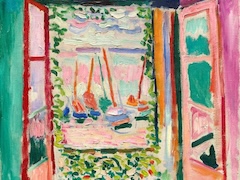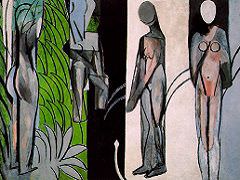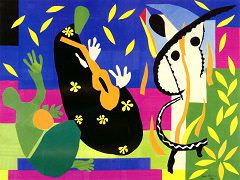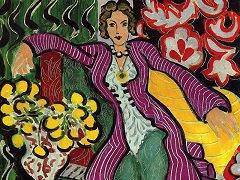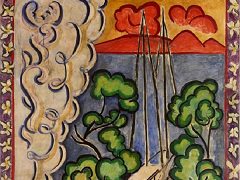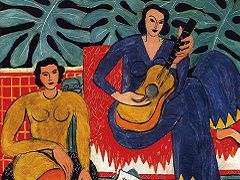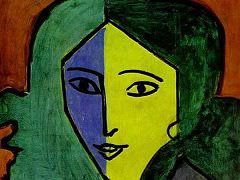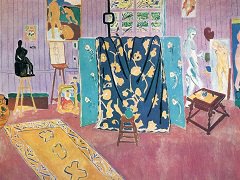Studio, Quai Saint-Michel, 1917 by Henri Matisse
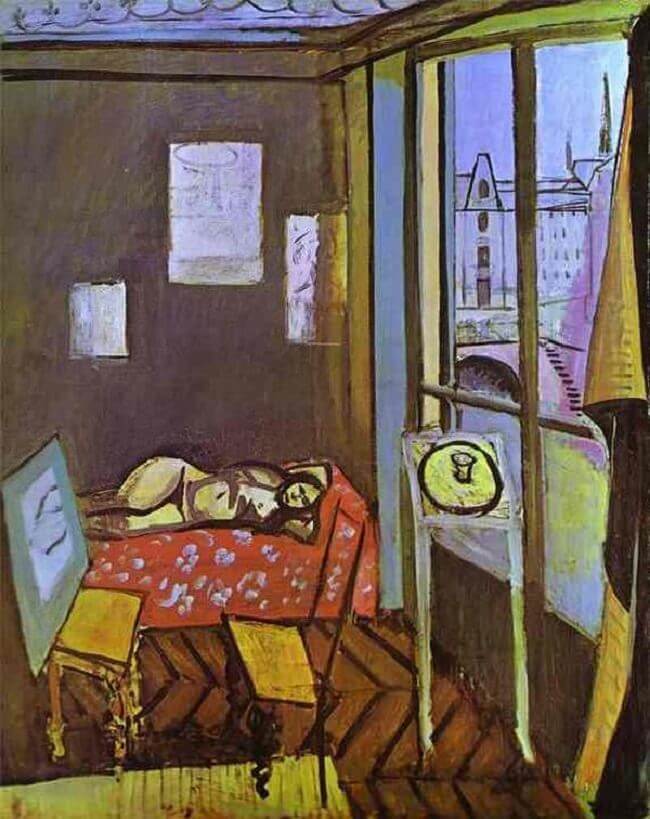
Matisse painted Studio, Quai Saint-Michel early in his career, in 1916. A mix of traditional and abstract styles, the painting's solemn image may have been a response to World War I, a source of anxiety for Matisse. The painting's first owner declared it "a most difficult picture to live with," but Phillips took a chance on it. He added the unsigned oil to the collection in 1940, 10 years after the artist visited the museum and expressed his regard for the American paintings on display and the Pierre Bonnard collection.
In Studio, Quai Saint-Michel, Matisse incorporates some of his most prevalent themes - the artist's studio, patterns (the floor and the bedspread), the artist and his model, and the open window, through which the Seine and the Pont Saint-Michel are visible. Visually the painting juxtaposes the indoor scene's hard pattern lines and a model's curves with the outdoor geometric buildings and arc of the bridge. Matisse often painted nude figures, and unlike in many of his other paintings, here depicts her facial features, hinting at a more intimate relationship. The easel's half-painted canvas and the artist's empty chair suggest that he has left the room for a brief moment.
Studio, Quai Saint-Michel has been influential for other artists - American artist Roy Lichtenstein visited the Phillips frequently in the 1940s while stationed in Washington during World War II and asserted that "no painting had greater impact" on his own work during that period.

